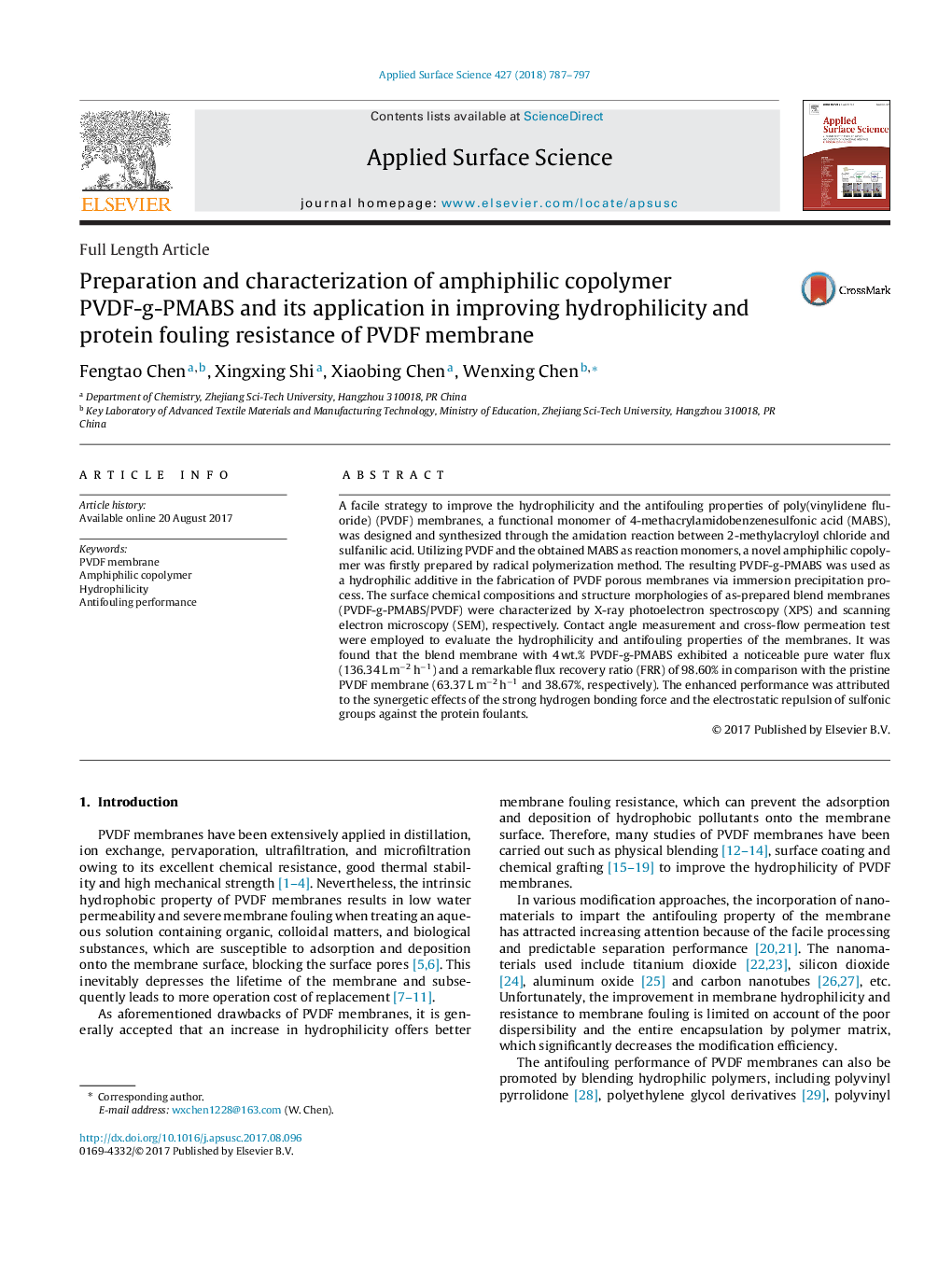| Article ID | Journal | Published Year | Pages | File Type |
|---|---|---|---|---|
| 5346845 | Applied Surface Science | 2018 | 11 Pages |
Abstract
A facile strategy to improve the hydrophilicity and the antifouling properties of poly(vinylidene fluoride) (PVDF) membranes, a functional monomer of 4-methacrylamidobenzenesulfonic acid (MABS), was designed and synthesized through the amidation reaction between 2-methylacryloyl chloride and sulfanilic acid. Utilizing PVDF and the obtained MABS as reaction monomers, a novel amphiphilic copolymer was firstly prepared by radical polymerization method. The resulting PVDF-g-PMABS was used as a hydrophilic additive in the fabrication of PVDF porous membranes via immersion precipitation process. The surface chemical compositions and structure morphologies of as-prepared blend membranes (PVDF-g-PMABS/PVDF) were characterized by X-ray photoelectron spectroscopy (XPS) and scanning electron microscopy (SEM), respectively. Contact angle measurement and cross-flow permeation test were employed to evaluate the hydrophilicity and antifouling properties of the membranes. It was found that the blend membrane with 4Â wt.% PVDF-g-PMABS exhibited a noticeable pure water flux (136.34Â LÂ mâ2Â hâ1) and a remarkable flux recovery ratio (FRR) of 98.60% in comparison with the pristine PVDF membrane (63.37Â LÂ mâ2Â hâ1 and 38.67%, respectively). The enhanced performance was attributed to the synergetic effects of the strong hydrogen bonding force and the electrostatic repulsion of sulfonic groups against the protein foulants.
Related Topics
Physical Sciences and Engineering
Chemistry
Physical and Theoretical Chemistry
Authors
Fengtao Chen, Xingxing Shi, Xiaobing Chen, Wenxing Chen,
